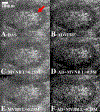Combining ADMIRE and MV to Improve Image Quality
- PMID: 35900997
- PMCID: PMC9484307
- DOI: 10.1109/TUFFC.2022.3194548
Combining ADMIRE and MV to Improve Image Quality
Abstract
Aperture domain model image reconstruction (ADMIRE) is a frequency-domain, model-based beamformer, in part designed for removing reverberation and off-axis clutter. Minimum variance (MV) is alternatively designed to reduce off-axis interference and improve lateral resolution. MV is known to be less effective in high incoherent noise scenarios, and its performance in the presence of reverberation has not been evaluated. By implementing ADMIRE before MV, the benefits of both these beamformers can be achieved. In this article, the assumptions of MV are discussed, specifically their relationship to reverberation clutter. The use of ADMIRE as a preprocessing step to suppress noise from simulations with linear scanning and in vivo curvilinear kidney data is demonstrated, and both narrowband and broadband implementations of MV are applied. With optimal parameters, ADMIRE + MV demonstrated sizing improvements over MV alone by an average of 52.1% in 0-dB signal-to-clutter ratio reverberation cyst simulations and 14.5% in vivo while improving the contrast ratio compared to ADMIRE alone by an average of 15.1% in simulations and 14.0% in vivo. ADMIRE + MV demonstrated a consistent improvement compared to DAS, MV, and ADMIRE both in terms of sizing and contrast ratio.
Figures







References
-
- Capon J, “High-resolution frequency-wavenumber spectrum analysis,” Proceedings of the IEEE, vol. 57, no. 8, pp. 1408–1418, 1969. [Online]. Available: http://ieeexplore.ieee.org/document/1449208/
-
- Sasso M and Cohen-Bacrie C, “Medical ultrasound imaging using the fully adaptive beamformer,” in Proceedings. (ICASSP ‘05). IEEE International Conference on Acoustics, Speech, and Signal Processing, 2005., vol. 2, no. 4. IEEE, 2005, pp. 489–492. [Online]. Available: http://ieeexplore.ieee.org/document/1415448/
Publication types
MeSH terms
Grants and funding
LinkOut - more resources
Full Text Sources
Miscellaneous

